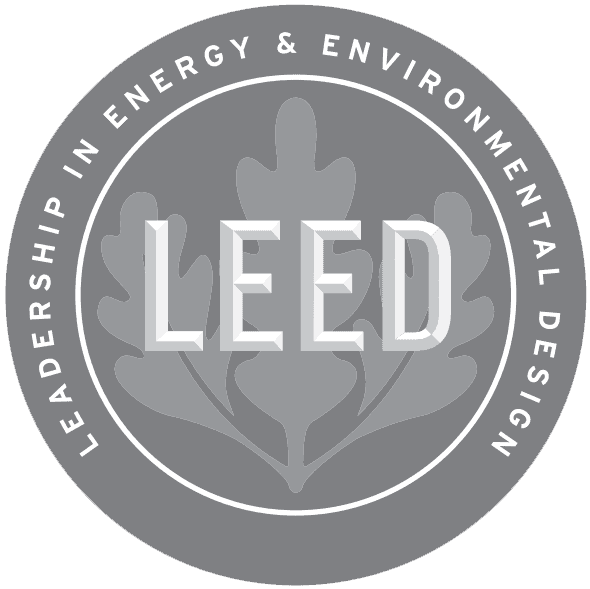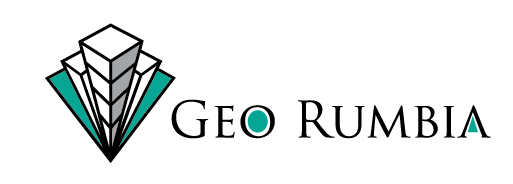
What is LEED?
LEED (Leadership in Energy and Environmental Design) is a green building rating system widely used globally. The rating system was initially developed by US Green Building Council (USGBC) in 1993. On 1998, USGBC launched the first LEED rating system providing a framework for healthy, highly efficient, and cost-saving green buildings.
There are several LEED projects types:
LEED FOR BUILDING DESIGN AND CONSTRUCTION
This rating suitable for Buildings that are new construction or being retrofitted for more than 50% of the overall floor area. In addition, at least 60% of the project’s gross floor area must be complete by the time of certification (except for LEED BD+C: Core and Shell).
There is no LEED expiry period on this type of rating.
· LEED BD+C: New Construction and Major Renovation. New construction or major renovation of buildings that do not primarily serve K-12 educational, retail, data centers, warehouses and distribution centers, hospitality, or healthcare uses. New construction also includes high-rise residential buildings 9 stories or more.
· LEED BD+C: Core and Shell Development. Buildings that are new construction or major renovation for the exterior shell and core mechanical, electrical, and plumbing units, but not a complete interior fit-out. LEED BD+C: Core and Shell is the appropriate rating system to use if more than 40% of the gross floor area is incomplete at the time of certification.
· LEED BD+C: Schools. Buildings made up of core and ancillary learning spaces on K-12 school grounds. LEED BD+C: Schools may optionally be used for higher education and non-academic buildings on school campuses.
· LEED BD+C: Retail. Buildings used to conduct the retail sale of consumer product goods. Includes both direct customer service areas (showroom) and preparation or storage areas that support customer service.
· LEED BD+C: Data Centers. Buildings specifically designed and equipped to meet the needs of high density computing equipment such as server racks, used for data storage and processing. LEED BD+C: Data Centers only addresses whole building data centers (greater than 60%).
· LEED BD+C: Warehouses and Distribution Centers. Buildings used to store goods, manufactured products, merchandise, raw materials, or personal belongings, such as self-storage.
· LEED BD+C: Hospitality. Buildings dedicated to hotels, motels, inns, or other businesses within the service industry that provide transitional or short-term lodging with or without food.
· LEED BD+C: Healthcare. Hospitals that operate twenty-four hours a day, seven days a week and provide inpatient medical treatment, including acute and long-term care.
· LEED BD+C: Homes and Multifamily Lowrise. Single-family homes and multi-family residential buildings of 1 to 3 stories. Projects 3 to 5 stories may choose the Homes rating system that corresponds to the ENERGY STAR program in which they are participating.
· LEED BD+C: Multifamily Midrise. Multi-family residential buildings of 4 to 8 occupiable stories above grade. The building must have 50% or more residential space. Buildings near 8 stories can inquire with USGBC about using Midrise or New Construction, if appropriate.
LEED FOR INTERIOR DESIGN AND CONSTRUCTION
This LEED rating suitable for interior space (s) project within building. It can be several floors, or partly in a floor. For the latter case is a bit tricky, because the space LEED boundary must be clearly demarcated and visible. In addition, at least 60% of the project’s gross floor area must be complete by the time of certification.
The certification is expired when the spaces are renovated/altered for more than 50% of overall project floor area on both architectural and MEP items.
· LEED ID+C: Commercial Interiors. Interior spaces dedicated to functions other than retail or hospitality.
· LEED ID+C: Retail. Interior spaces used to conduct the retail sale of consumer product goods. Includes both direct customer service areas (showroom) and preparation or storage areas that support customer service.
· LEED ID+C: Hospitality. Interior spaces dedicated to hotels, motels, inns, or other businesses within the service industry that provide transitional or short-term lodging with or without food.
LEED FOR BUILDING OPERATIONS AND MAINTENANCE
This LEED rating is suitable for Existing buildings that are undergoing improvement work (less than 50% of the overall project floor area) or little to no construction.
This is the only LEED rating system requires recertification every 5 years and 3 years for LEED version 4.0 and 4.1 respectively.
· LEED O+M: Existing Buildings. Existing buildings that do not primarily serve K-12 educational, retail, data centers, warehouses and distribution centers, or hospitality uses.
· LEED O+M: Retail. Existing buildings used to conduct the retail sale of consumer product goods. Includes both direct customer service areas (showroom) and preparation or storage areas that support customer service.
· LEED O+M: Schools. Existing buildings made up of core and ancillary learning spaces on K-12 school grounds. May also be used for higher education and non-academic buildings on school campuses.
· LEED O+M: Hospitality. Existing buildings dedicated to hotels, motels, inns, or other businesses within the service industry that provide transitional or short-term lodging with or without food.
· LEED O+M: Data Centers. Existing buildings specifically designed and equipped to meet the needs of high density computing equipment such as server racks, used for data storage and processing. LEED O+M: Data Centers only addresses whole building data centers.
· LEED O+M: Warehouses and Distribution Centers. Existing buildings used to store goods, manufactured products, merchandise, raw materials, or personal belongings (such as self-storage).
LEED FOR NEIGHBORHOOD DEVELOPMENT
This type of LEED rating is suitable for new land development projects or redevelopment projects containing residential uses, non-residential uses, or a mix. Projects may be at any stage of the development process, from conceptual planning through construction. It is recommended that at least 50% of total building floor area be new construction or major renovation. Buildings within the project and features in the public realm are evaluated.
· LEED ND: Plan. Projects in conceptual planning or master planning phases, or under construction.
· LEED ND: Built Project. Completed development projects.
